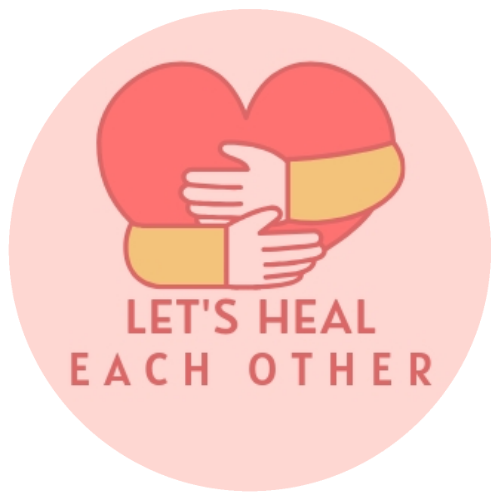Last Updated on July 8, 2025 by Author Sammy

Curiosity is fueled by a mix of internal motivation, intellectual challenge, personal development, and interpersonal relationships. Driven by an authentic passion for acquiring knowledge and comprehension, they proactively search out chances to investigate novel concepts, interact with the environment, and acquire insights.
Did You Know?
- THE EVOLUTION OF INTERNET TROLLING: FROM INCONVENIENT INTERRUPTIONS TO PLANNED ASSAULTS
- THE BIRTH OF SOCIAL MEDIA: REMEMBERING SIX DEGREES IN 1997.
- BEYOND WORDS: RISE OF EMOJIS
- BEYOND BORDERS: THE GLOBAL PASSPORT POWER
- CRISPY, CRUNCHY, AND CLASSIC: THE EVOLUTION OF POTATO CHIPS
- THE SAUCY SAGA: EXPLORING THE CROSS-CONTINENTAL TALE OF MAYONNAISE
- COCOA BEANS TO CHEMISTRY: THE LOVE MOLECULE IN CHOCOLATE
- MYTH BUSTING VENICE: SETTING THE RECORD STRAIGHT
- INVISIBLE RADIANCE: THE INTRIGUING WORLD OF HUMAN LIGHT EMISSION
- 3 DIVINE FEMININE ENERGIES IN THE MAJOR ARCANA TAROTLast Updated on October 6, 2025 by Author Sammy Hello, My Soulful Readers I hope you and your family are doing well. So let us get started with our topic today. So, today I’m going to describe three divine feminine energies seen in our major arcana tarot cards from my perspective. Many tarot readers may… Read more: 3 DIVINE FEMININE ENERGIES IN THE MAJOR ARCANA TAROT
- YES, SPIRITUAL PEOPLE ALSO NEED MONEY — BUT NOT THROUGH ILLICIT GAINS
- EVERYTHING IS PERFECTLY TIMED- “FAITH AND EVEN DOUBT” FAQs On Astrology,Destiny And Life PathsLast Updated on August 7, 2025 by Author Sammy YOUR DOUBT IS ALSO CONSIDERED SACRED, BUT WHO KNOWS THAT IT CAN BE THE FIRST STEP TOWARD CONVICTIONS EVERYTHING IS PERFECTLY TIMED- “FAITH AND EVEN DOUBT” Before I get started, let me start by saying that everyone is welcome here, regardless of whether they believe in… Read more: EVERYTHING IS PERFECTLY TIMED- “FAITH AND EVEN DOUBT” FAQs On Astrology,Destiny And Life Paths
- BEAUTY ON YOUR PLATE: FOODS THAT PROMOTE NATURAL BEAUTYLast Updated on July 19, 2025 by Author Sammy An Amiable Reminder To Embrace Your Inherent Beauty In a society that is rushing for rapid repairs and changes, it’s simple to believe that beauty can be purchased, modified or implanted. The kind of beauty that draws attention and moves people’s emotions, however, is not found behind… Read more: BEAUTY ON YOUR PLATE: FOODS THAT PROMOTE NATURAL BEAUTY
- Beauty Standards Are On Read – NOT RESPONDINGLast Updated on July 24, 2025 by Author Sammy WHO ESTABLISHED THE GUIDELINES? Perfection used to be synonymous with morality. Sculpting character was more important than having glass skin or cheekbones. People wanted to be flawless in their actions rather than their looks. They put their all into becoming the best versions of themselves by… Read more: Beauty Standards Are On Read – NOT RESPONDING
The Evolution Of Internet Trolling: From Inconvenient Interruptions To Planned Assaults
The term “troll” in internet slang, which refers to someone who purposefully annoys or harasses others online, is thought to have arisen in the early 1990s among the Usenet community. Usenet was a distributed discussion system that existed before the World Wide Web and was popular with early internet users.
The term “troll” was used to characterize people who would interrupt online discussions by posting inflammatory or off-topic statements in the hopes of eliciting emotional responses from other users. These folks’ behavior was compared to that of fabled trolls who purposefully caused problems.The term “troll” has come to refer to a variety of disruptive behaviors in online groups, such as harassing, spamming, and disseminating misinformation. It has since entered common parlance and is widely understood to refer to someone who engages in such activity on the internet.
The Birth Of Social Media: Remembering Six Degrees In 1997.
Six Degrees, founded in 1997, is widely regarded as the first identifiable social media platform. Six Degrees allowed users to establish profiles, add friends, and browse other users’ accounts. While it was relatively popular at the time, it closed in 2001.
However, it’s worth noting that the concept of social networking predates the internet. Bulletin board systems (BBS), which enabled users to chat and share information over dial-up modems, might be considered forerunners of modern social media platforms. BBS gained popularity in the 1980s and early 1990s.Other early social media platforms include Friendster (2002), MySpace (2003), and LinkedIn (2003), all of which helped to build and popularize social networking on the Internet.
Beyond Words: Rise Of Emojis
Emojis, as we know them now, were not created by one person. They began in Japan in the late 1990s as a means of adding emotional meaning to text-based communication in digital messages. Shigetaka Kurita, a Japanese designer at NTT DoCoMo, a telecommunications corporation, is widely credited with designing the first set of emojis in 1999. Kurita created 176 pictograms, each measuring 12×12 pixels, to depict diverse emotions, objects, and expressions.
Emojis first gained popularity in Japan and then extended around the world as cellphones and social media platforms became more popular. Emojis are now often used in digital communication to convey emotions, enhance text-based messages, and add a humorous element to conversations. They’ve become an essential aspect of modern communication culture.
The term “emoji” is derived from the Japanese terms “e” (image) and “moji” (character).
Beyond Borders: The Global Passport Power
The number of nations a passport holder can access without a visa or by getting one upon arrival is usually used to determine the “power” of a passport. Based on this criterion, two well-known rankings evaluate passport power: the Henley Passport Index and the Passport Index. As of my most recent update, passports from Singapore and Japan were frequently considered the strongest in the world since their holders could enter the greatest number of countries without a visa or without having to obtain one upon arrival.
However, a number of variables, such as shifts in visa regulations and diplomatic ties between nations, can cause passport rankings to fluctuate over time. For the most up-to-date information, it is imperative that you refer to the most recent rankings.
Crispy, Crunchy, And Classic: The Evolution Of Potato Chips
The origin of chips, specifically potato chips, is sometimes attributed to George Crum, a Native American cook working at the Moon Lake Lodge resort in Saratoga Springs, New York, in the 1850s. According to legend, after a disappointed client complained that Crum’s fried potatoes were too thick and soggy, Crum sliced them paper-thin, cooked them till crispy, then seasoned them with salt. The consumer adored the outcome, and potato chips were born.
However, it is important to note that the claim of George Crum’s discovery of potato chips is anecdotal and may be false. There are numerous stories and variants on the origin of potato chips, and the specific circumstances surrounding their invention are unknown. Nonetheless, George Crum’s role in popularizing potato chips is well known, and his name has become linked with their development in popular culture.
The Saucy Saga: Exploring The Cross-Continental Tale Of Mayonnaise
Mayonnaise is said to have been invented by the French, though its actual origins are unclear. According to one common myth, mayonnaise was invented in the town of Mahón (Mahon) on Menorca, Spain, in the 18th century. The term “mayonnaise” is considered to come from “mahonnaise” or “moyeunnaise,” which refers to the town of Mahón. Another idea holds that mayonnaise was invented in France, possibly in Bayonne or Paris, around the same time. Mayonnaise was previously known as “bayonnaise” or “bâtarde,” according to one idea, before being referred to as “mayonnaise.”
Regardless of its actual origins, mayonnaise is generally produced with egg yolks, oil, vinegar or lemon juice, and seasonings including salt, mustard, and herbs. The components are emulsified, resulting in a creamy and tangy sauce that can be used as a condiment or as a foundation for other sauces.
Mayonnaise has now become a famous and adaptable condiment enjoyed all over the world, with variations and regional modifications appearing in a variety of cuisines. It is frequently used in salads, sandwiches, dips, and as a garnish for a variety of foods.
Cocoa Beans To Chemistry: The Love Molecule In Chocolate
The chemical pephenylthylaminine, or PEA, which is released in the brain during a romantic relationship, is present in chocolate. A naturally occurring chemical substance called phenylethylamine (PEA) is present in chocolate and is also created in the brain during feelings of love and ecstasy. Because of its link to romantic feelings, PEA is sometimes referred to as the “love chemical” or the “love drug”. Eating chocolate can raise the brain’s PEA levels, which can result in happy and pleasurable emotions. But compared to the amounts the brain normally produces when it experiences love, the amount of PEA in chocolate is rather modest, and its effects are mild.
Chocolate is commonly associated with sentiments of love and happiness, but because of its high sugar and fat content, it should only be used in moderation as part of a balanced diet to avoid health problems.
Myth Busting Venice: Setting The Record Straight
The myth of a “idiot” opening a water tap in Venice is a modern urban legend that has no historical foundation. It’s a funny anecdote that has spread online and in popular culture, but it’s not based on true events. While the specifics of the “idiot” water tap may change throughout time, it remains a symbol of Venice’s constant war against flooding and water management. Today, attempts to safeguard Venice from floods include sophisticated infrastructure initiatives like the MOSE flood barrier system, as well as traditional maintenance and conservation approaches.
Venice’s particular geography, as well as the effects of variables such as subsidence, sea level rise, and tidal oscillations, present significant flooding issues. However, there is no record of somebody purposely triggering floods in Venice by opening a water tap. The city has taken a number of steps to address floods, including the construction of flood barriers, the upkeep of the canal system, and the elevation of pathways and buildings. While flooding is still an issue, especially during high tides and storms, it is not the result of a single “idiot” activating a water tap.
Invisible Radiance: The Intriguing World Of Human Light Emission
Humans do emit a small glow of light, but it is incredibly weak and usually invisible to the naked eye. The phenomenon is referred to as “bioluminescence” or “ultraweak biophoton emission.” Scientists have examined the phenomena of human bioluminescence, which occurs when the body generates dim visible light. According to a 2009 study by Japanese scientists, human bioluminescence fluctuates throughout the day, with the brightest patches often found on the forehead, neck, and cheeks in the late afternoon and the dimmest late at night.
Research has proven that living species, including humans, release biophotons, which are extremely faint photons of light produced by biological events within cells. These biophotons are thought to have a role in several biological processes, including cell communication, metabolism, and DNA repair.
While this bioluminescence is too low to be detected by the naked eye without specialized equipment, sensitive cameras and photon detectors have been employed in scientific investigations to quantify it. The actual mechanics and biological importance of human bioluminescence are still being investigated.







